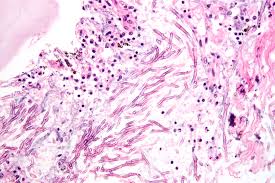
Scientists have identified an antifungal compound produced by bacteria on the skin of some frogs, a finding that may pave the way for treatments against pathogenic fungi affecting humans.
In the past few decades, a lethal disease has decimated populations of frogs and other amphibians worldwide, even driving some species to extinction. Yet other amphibians resisted the epidemic.
Previous research has shown that skin bacteria can protect the animals by producing fungi-fighting compounds. Scientists decided to explore these as potential novel antifungal sources for the benefit of humans and amphibians.
"Amphibians inhabit humid places favouring the growth of fungi, coexisting with these and other microorganisms in their environment, some of which can be pathogenic," said Roberto Ibanez, from Smithsonian Tropical Research Institute in the US.
"As a result of evolution, amphibians are expected to possess chemical compounds that can inhibit the growth of pathogenic bacteria and fungi," said Ibanez, one of the authors of the study published in the journal Scientific Reports.
The team first travelled to the Chiriqui highlands in Panama, where the chytrid fungus, responsible for the disease chytridiomycosis, has severely affected amphibian populations.
They collected samples from seven frog species to find out what kind of skin bacteria they harboured.
"Amphibians have glands scattered on their skin that produce different compounds," Ibanez said.
"In addition, their skin is inhabited by a diverse community of bacteria that produce metabolites that inhibit the growth of fungi and other bacteria," he said.
Back in the laboratory, 201 bacterial strains were retrieved from their samples and tested against Aspergillus fumigatus, a fungus that causes invasive aspergillosis in immunocompromised patients.
Of these, 29 showed antifungal activity, but a bacterium called Pseudomonas cichorii showed the greatest potential to inhibit the growth of A fumigatus.
After identifying the most promising bacteria, the scientists used mass spectrometry and molecular networking techniques to determine among all the chemical compounds produced by P cichorii, which one was keeping the fungi at bay.
They also observed the interactions between this bacteria and A fumigatus to identify the bacterial compounds acting in areas where fungal activity was most inhibited.
The main compounds were cyclic lipopeptides that included massetolides and viscosin.
The team then separated viscosin from the other components produced by P cichorii and tested it invitro against A fumigatus and the chytrid fungus. The results confirmed that viscosin displayed significant activity against both.
This research project holds promise for humans and frogs.
Studying the skin bacteria of Panamanian frogs may lead to the development of alternative drugs to treat the fungi causing aspergillosis in humans, which are becoming more drug-resistant, and to defy the chytridiomycosis epidemic, the major source of disease-related death among amphibians worldwide.
"We are showing to the scientific community a set of possible alternative molecules to fight fungal drug resistance in humans," said Christian Martin, of Institute for Scientific Research and High Technology Services (INDICASAT-AIP) in the US.
"For amphibians, this is a promising study because there are only four bacterial secondary metabolites chemically described that inhibit chytrid fungi. In this study, we are introducing a new family of chemical compounds found in Panamanian frogs that could help amphibians worldwide," he said.
"This research has identified an antifungal compound produced by frog skin bacteria, which may be used to control pathogenic fungi affecting humans and amphibians," said Ibanez.



No comments:
Post a Comment